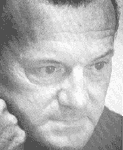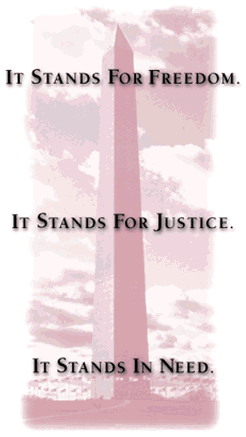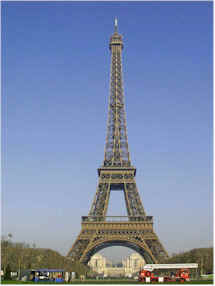|
Links |
|
Links |
|||
| - Project: Sociological Imagination: Marriage & Divorce |
|
||||
| - Project: Video: Social Insight: Families |
|
||||
| A SOCIOLOGICAL IMAGINATION IS THE ABILITY TO UNDERSTAND THE FORCES OF BIOGRAPHY & HISTORY ON ONE'S OWN LIFE & ON SOCIETY | |||||
|
|
C. Wright Mills developed the concept of the sociological imagination (Soc Im ) |
|
|||
| Mills described how sociology helps us to see how social situations
shape our private realities.
He called this the sociological imagination |
|||||
| What factors influence our lives? |
|
||||
| We each have individual experiences of common patterns in life |
|
||||
| Individual experiences of
common patterns of life: family life
History |
|||||
| We each live our life as bounded by a particular history |
|
||||
|
|
For Mills, the sociological imagination can be thought of as the intersection of biography & history |
|
|||
| Our biography, our life is set w/in a history / social conditions over which we have very limited power | |||||
| If we are caught up in a world event such as a war, disaster, major econ event, etc., then our life may be totally inundated by these forces | |||||
| For many Westerners, our lives exist partially w/in / or are influenced by histl forces, but a large portion appears to exist outside of these forces | |||||
| For a very few people, there is little or no impact of histl / social forces on their lives, though this is rare as in the case of a hermit or a very independent person | |||||
|
|
THE SOC IMAGINATION IS THE ABILITY TO UNDERSTAND ONE'S BIOGRAPHY / LIFE IN THE CONTEXT OF HISTL FORCES |
|
|||
|
|
The sociological imagination is the quality of mind which helps
each person
- use information - to develop reason - in order to achieve lucid summations of what is going on - in the world - and what is happening in themselves |
|
|||
| The sociological imagination is an understanding, a feeling of the impacts of social forces shaping peoples' behavior | |||||
|
|
The sociological imagination is the insight that is gained through sociology | ||||
| There are questions to ask to develop your sociological imagination | |||||
| a. WHAT IS THE STRUCTURE OF SOCIETY AS A WHOLE? | |||||
| What components?
How are they related? How does it compare to other social orders? |
|||||
| b. WHERE DOES THIS SOCIETY STAND IN HUMAN HISTORY? | |||||
| Top? Bottom? Middle? | |||||
| c. WHAT VARIETIES OF MEN & WOMEN NOW PREVAIL IN THIS SOCIETY? | |||||
| Farmers, industrial workers, hep cats, tech workers, soccer moms, yuppies... | |||||
| d. WHAT VARIETIES OF PEOPLE ARE COMING TO PREVAIL? | |||||
| Who are the people & what are their lifestyles that are "behind the times?" Dinosaurs? | |||||
| Who has embraced the new... & is running w/ it? | |||||
| SOC IMAGINATION CONCEPTS ALLOW ONE TO SEE THE GENERAL IN THE PARTICULAR; TO UNDERSTAND HOW SOCIAL FORCES IMPACT EVERYDAY LIFE |
|
||||
| In using the sociological imagination, we learn to distinguish personal trouble from social issues | |||||
| 1. TROUBLES ARE 'PERSONAL PROBLEMS' | |||||
| Troubles are considered to be a private matter, a personal or individual problem in the sense that both the cause & the solution of the trouble lie w/in the control of a person | |||||
| 2. ISSUES ARE PUBLIC / SOCIAL / POLITICAL PROBLEMS | |||||
| Issues are considered to be a public matter, a social or group problem in the sense that both the cause & the solution of the issue lie w/ societal level action | |||||
| Issues are also known as contradictions or social contradictions | |||||
| In using the sociological imagination, we learn to distinguish excuses from explanations | |||||
| 3. EXCUSES ARE RATIONALIZATIONS FOR 'PERSONAL PROBLEMS' |
|
||||
| Excuses are reasons presented by individuals for a default of a duty or obligation, i.e. a trouble, as a defense, a pretext, or an apology | |||||
| Only troubles may have excuses because responsibility lies only w/ the individual | |||||
| 4. EXPLANATIONS ARE THE MAKING CLEAR OF THE REASONS FOR PUBLIC PROBLEMS | |||||
| Explanations are reasons presented by groups or representatives of societies or segments of societies for a default of a duty or obligation, i.e. an issue, as a defense, a pretext, or an apology | |||||
| Only issues may have explanations because responsibility lies only w/ groups, segments of societies or societies | |||||
| 5. INDIVIDUALIZING IS THE ERROR OF TREATING ISSUES AS PERSONAL PROBLEMS | |||||
| Individualizing is the personalizing of issues which have a social force component | |||||
| A person who is individualizing views an issue as a trouble | |||||
| In modern society, which is the most individualistic society in history, many people look only to the personal level for all problems | |||||
| Many people look only at themselves:
Where did I go wrong? Why did my spouse treat me that way? |
|||||
| 6. COLLECTIVIZING IS THE ERROR OF TREATING PERSONAL PROBLEMS AS ISSUES | |||||
| A person who collectives tries to avoid responsibility for a personal trouble by blaming it on social forces | |||||
| Collectivizing is the socializing of troubles which have a person component | |||||
| Since the 1960s there has been a trend away from individualizing toward collectivizing | |||||
| 7. FALSE CONSCIOUSNESS IS THE ERROR LIVING ONE'S LIFE W/ NO CONCEPTION OF HISTL / SOCIAL FORCES | |||||
| The opposite of a sociological imagination is false consciousness | |||||
| False consciousness occurs when we live out a biography w/o seeing impact of history or society | |||||
| While the idea of false consciousness can be compared to the sociological imagination, Marx first developed the idea of false consciousness when he was trying to determine why workers support an oppressive system or tyrant | |||||
| Today, many social scientists try to understand the phenomenon of false consciousness as seen when the people of Bosnia support Milsovic when the US was bringing him down in the early 1990s; or the people of the Middle East supported Salaam Hussein | |||||
| False consciousness results in the inability to distinguish personal troubles from social issues | |||||
| In using the sociological imagination we learn to distinguish personal troubles from social issues | |||||
| EXAMPLE: WE OFTEN INDIVIDUALIZE UNEMPLOYMENT, SEEING THE ISSUE OF NO JOB AS A PERSONAL PROBLEM | |||||
|
|
Unemployed 1929 & 2004-- is it an issue or a responsibility? |
|
|||
|
|
Mills' quote on unemployment | ||||
| War creates recognizable personal troubles that most people can easily link to the impersonal social forces of war, though many veterans suffer because of the tendency to individualize their issues: medical & mental health care | |||||
| Economic downturns create social issues that are more difficult to recognize & most people view these issues as troubles, thus individualizing the problem |
|
||||
|
|
Can one of our most intimate relationships, marriage, be affected
by social forces?
Or is marital bliss or marriage on the rocks attributable only to individual causes? |
|
|||
| What are some of the factors affecting marriage & divorce? |
|
||||
|
|
Differing social forces affected marriage & divorce in the 50's & the 00's |
|
|||
| "College Women Faculty & Household Work in the US & China" |
|
||||
| Using the sociological imagination, we can see that the US & China are very different, but housework is divided similarly in both countries in that wives do about 65% of housework with the rest being done by men & hired help | |||||
| Using the sociological imagination, we can see that many gender relations transcend cultures supporting feminist claims that understanding gender relations is essential to understanding society | |||||

C. Wright Mills "In these terms, consider unemployment.
But when in a nation of 50 million
employees,
|
|
||||
|
|
||||
|
|
||||
|
1980s: 5.2 divorces per 1000 married women 1990s: 4.5 divorces per 1000 married women |
||||
|
|
Some factors change everyone's risk of divorce:
|
"College Women Faculty and Household Work in the US and China" The US & China are very different, but housework is divided similarly in both countries w/ women: wives do about 65% of housework with the rest being done by men and hired help. Many gender relations transcend cultures: this supports
feminist claims that understanding gender relations is essential to understanding
society.
|


